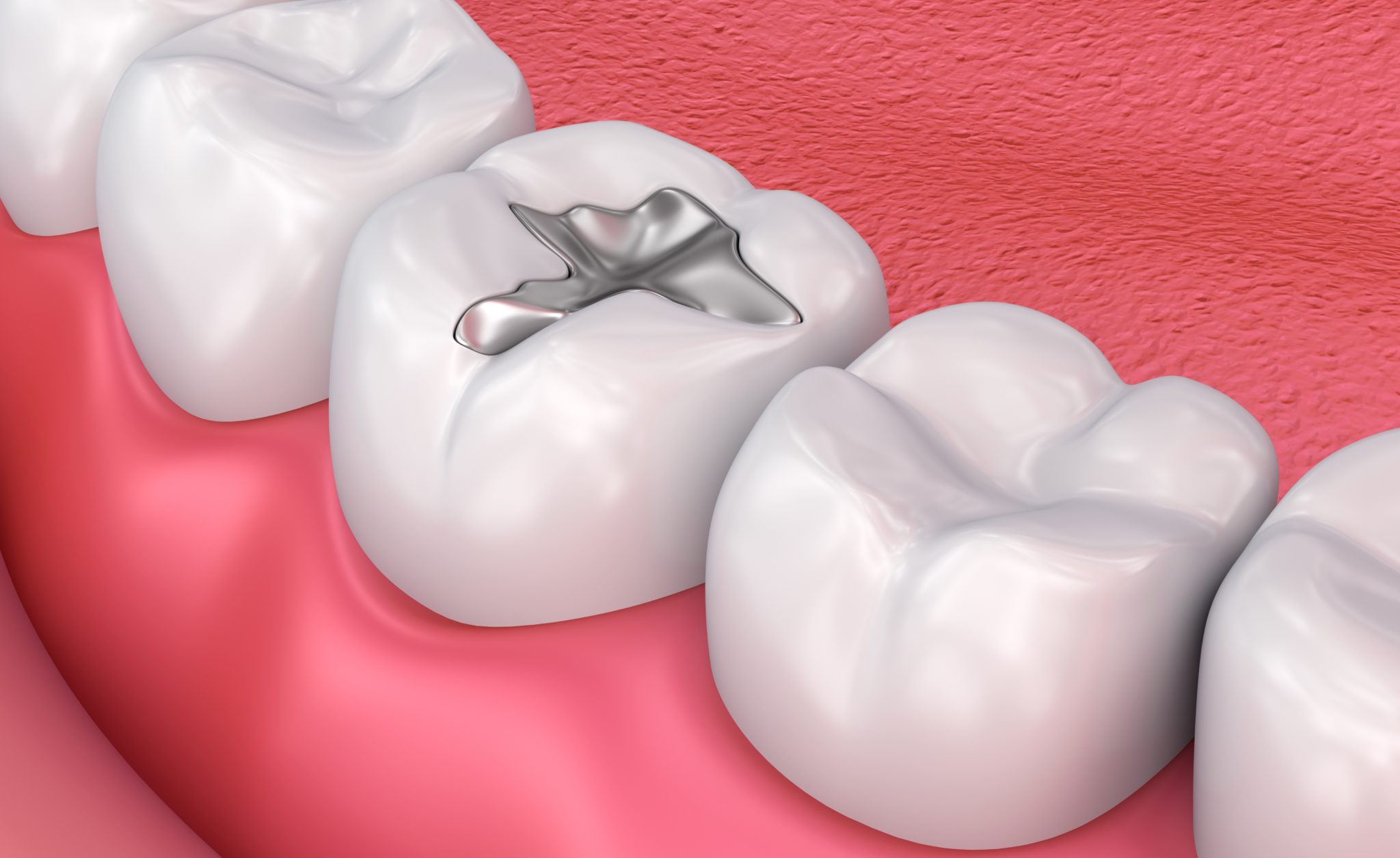The majority of Americans will need to get a dental filling, making it one of the most common dental procedures. Despite how common it is, many people still have a number of questions when it comes to what the different options are, especially the difference between traditional silver or amalgam fillings or composite fillings.
If you are feeling a sharp pain when you bite down, or a throbbing in your jaw you may need to see a dentist get a cavity filled. You have a lot of choices when it comes to how to address the cavity. Let’s takes look at two of the major choices you will need to make when you get a dental filling, the amalgam, and the composite fillings.
Dental Fillings Defined
When a cavity has formed on the tooth and worn through the tooth enamel it cannot be repaired with a standard fluoride treatment. The hole in the enamel exposes the softened dentin tissue beneath, and it is at risk of becoming infected. To prevent this, a dentist will clean and fill the hole.
The first step of the filling process is to prepare the tooth for the placement of the material used in the restoration. The preparation begins by cutting away a portion of the tooth that is infected. The dental decay is removed and the tooth is then cleaned thoroughly. Any portion of the remaining tooth is removed it if is structurally unsound. Sometimes a temporary restoration is placed if the tooth cannot be filled immediately.
Once the tooth is prepared, the filling is placed. What material is used for the restoration varies depending on the location, the availability of materials, patient preferences, and the cost. The most common types of filling materials are amalgam and composite fillings. Each type has their own benefits and drawbacks. Let’s take a look at these two materials:
Amalgam Fillings
An amalgam filling is sometimes called “silver fillings”. It is made from a mixture of metals, thus they are called an amalgam. Their composition is a mixture of mercury, silver, tin, and copper. While normally toxic, the mercury is rendered inert by the other metals and is rendered safe and stable. This kind of filling is very strong and durable, and it is perfect for long term use.
The amalgam filling has a long history of being reliably used by many patients. The earliest amalgam fillings were first used in the 19th century. Amalgam fillings can discolor the tooth as light cannot pass through the tooth, like how it does in a natural tooth. Some patients experience some sensitivity to the metals used in the amalgam.
Composite Fillings
This kind of filling is a newer option. Composite fillings — sometimes called white fillings — are made from a resin made from ceramic and plastic compounds. They are easily matched to the natural tooth color of surrounding teeth. This means they are a great option to fill cavities in teeth that are exposed when smiling, like front teeth. These filings are nearly invisible.
They adhere to the tooth easily and can bond to the surface of the tooth itself. They also preserve the maximum amount of teeth when compared to an amalgam filling by shaping easily to the tooth.
Be sure to note that the procedure of getting a composite filling may take longer than getting an amalgam filling. White fillings do not contain any metals, including mercury, so there are no health risks associated with white fillings. Some patients report that they experience less post-treatment discomfort and sensitivity from composite fillings.
What is dental bonding?
Dental composite fillings are sometimes called dental bonding. The procedure can be done in a single visit to the dentist. The composite resin is bonded and shaped on the tooth after being placed, hardened, and polished. This makes it perfect for small, cosmetic dental work. It also requires the lowest amount of enamel to be removed compared to other tooth repair options like crowns and veneers.
The process begins with a gentle phosphoric acid that is applied to the tooth. This makes the surface ready to accept the resin. The resin is like putty and is shaped and sculped onto the tooth.
Then the dentist will use a special light to harden the resin and then set in place. It is polished and buffed for a smooth finished. This entire procedure takes just 30 minutes to an hour. Anesthesia is often not needed unless the bonding is used to fill a decayed tooth.
How Durable Are Composite Fillings?
Despite being very durable, any kind of filling has a finite lifespan before they begin to fail and have to be replaced. Notify your dentist as soon as possible if you notice your filling has failed. This means you must replace the filling as soon as possible to preserved the health of your tooth.
A composite filling will last between seven to ten years for most patients. The materials used in these fillings are always advancing. Today’s composite fillings are more durable than those used in the past.
Newer materials can be as durable as amalgam fillings. This kind of filling is slightly stronger and durable. Amalgam fillings can last up to 12 years if they are taken care of properly.
How strong are composite fillings?
White composite fillings have been given a reputation of being weaker than amalgam fillings. This is changing as new developments in materials have madet hem stronger than materials in the past. More people are choosing composite filling over amalgam filings now than ever before.
What material is the best for a dental filling?
No material is clearly the best, as it depends on your oral health needs and your preferences. As you consult with your dentist about what to do about your cavity, consider some of the following:
- Cost
- How it looks
- Other health concerns
Composite fillings are the most attractive filling option, but they are often more expensive than traditional amalgam fillings. They are not as durable as silver fillings.
How much do dental filings cost?
Dental composite fillings can cost between $300 to $600 per tooth. Generally insurance will cover the cost of the procedure, and most will also cover the cost of bonding. Your insurance company will often cover the filling when it is done to preserve the tooth’s structure, or if you fill a cavity. This procedure will generally take just one visit to the dentist.
Amalgam fillings tend to be cheaper, with their average cost being between $50 to $150 for a single amalgam filling. The price of both kinds of fillings can vary depending on your location, the dentist, your insurance, and other factors.
FAQ
Here are some common questions about dental fillings:
Is getting dental fillings painful?
The actual procedure is painless as fillings are not used in ares of the tooth that have nerves.
Are dental fillings good?
Tooth fillings are good for people who need to stop tooth decay that has penetrated the enamel. They cannot replace good dental hygiene.
Can I fill a cavity at home?
No, cavities need to be filled by a dental professional to properly clean and seal the tooth.
How hard is getting a filling?
The process is easy and often very comfortable. The procedure is painless and will eliminate the pain from tooth decay.
How long do fillings last?
Fillings can last between eight to twelve years depending on the materials last.
Dental Filling Experts in Upland, CA
Upland Dental Group & Implant Center in Upland, CA can do all the necessary dental work to determine the option that’s right for you. Upland Dental Group & Implant Center proudly serves the Upland area with a full range of Dental & Implant services. Give us a call at (909) 985-1966 to schedule an appointment.



